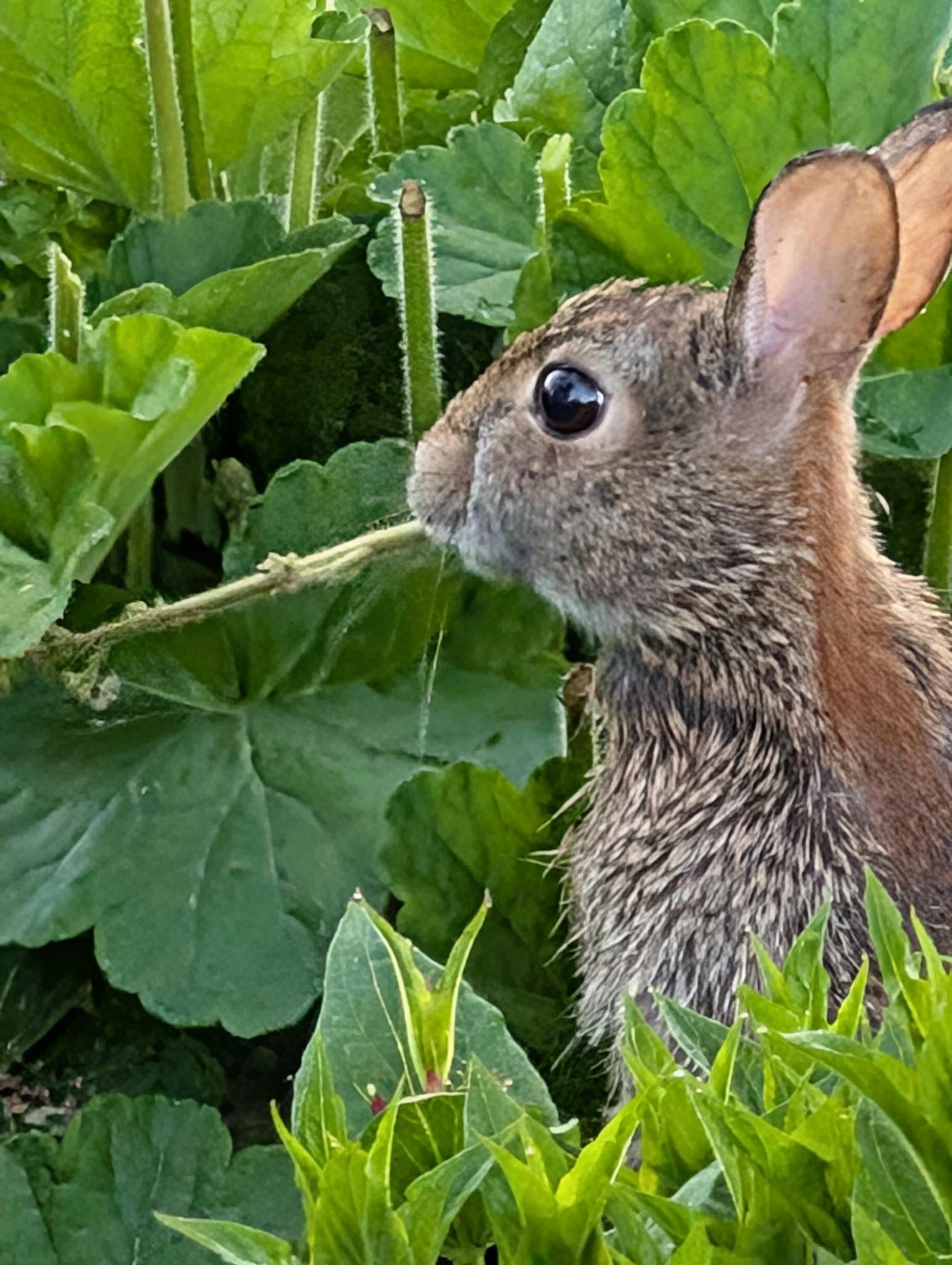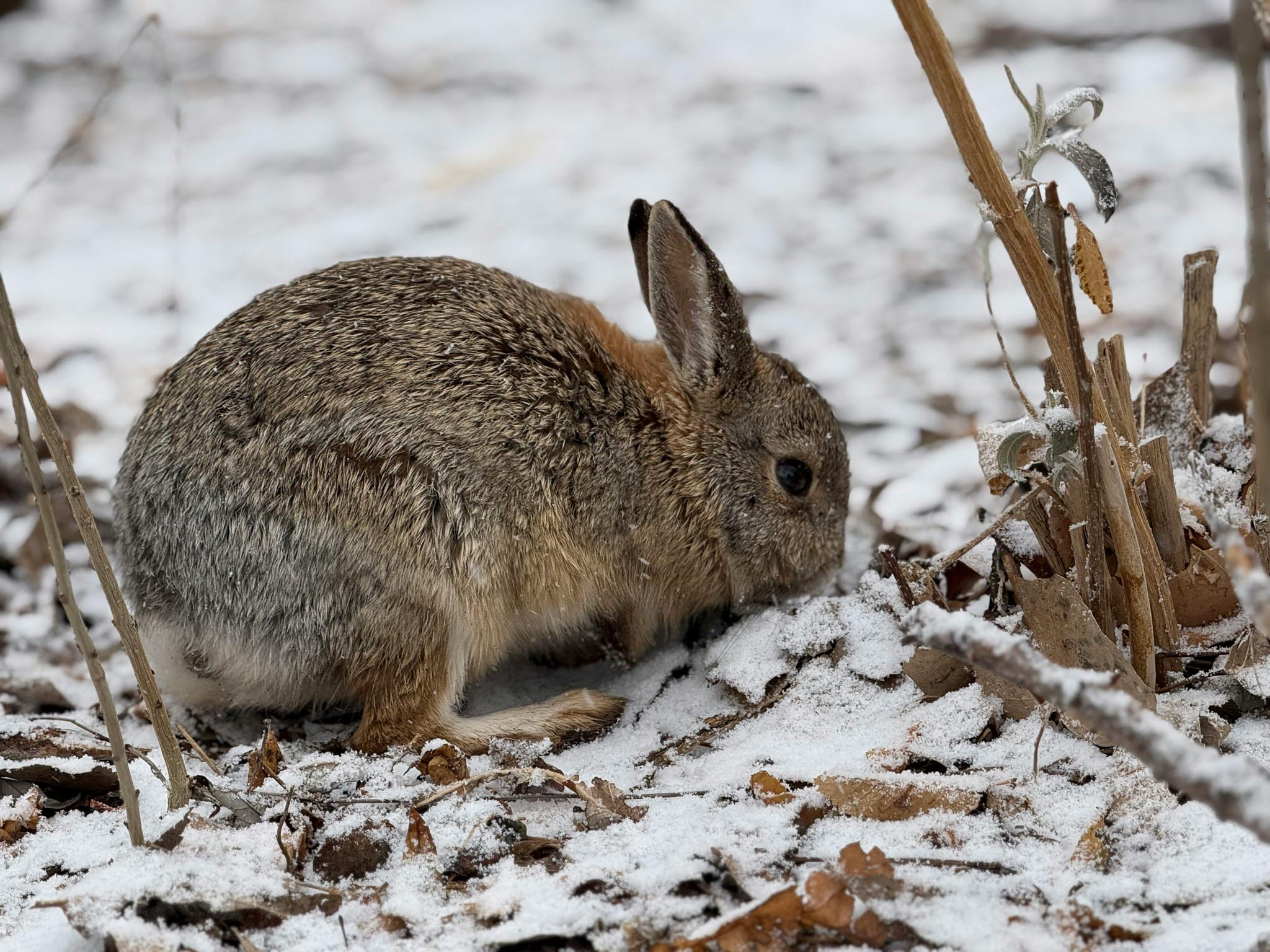Cottontail Rabbits
Introduction
Cottontail rabbits (Sylvilagus spp.) are among the most common and familiar wild mammals in North America, widely recognized for their distinctive fluffy white tail. These rabbits thrive in Missouri, the Midwest, and throughout the United States, living in a variety of habitats ranging from grasslands to suburban backyards. While they play an important ecological role as prey and seed dispersers, they can cause extensive damage to gardens, shrubs, and young trees.
Biology

Taxonomy:
-
Order: Lagomorpha
-
Family: Leporidae
-
Genus: Sylvilagus
-
Common species:
-
Eastern Cottontail (S. floridanus)
-
Desert Cottontail (S. audubonii)
-
Mountain Cottontail (S. nuttallii)
-
Physical Characteristics:
-
Size: 14–19 inches (35–48 cm) long
-
Weight: 2–4 pounds (0.9–1.8 kg)
-
Appearance: Brown to gray fur with a white underside, large ears, and strong hind legs
-
Distinctive “cotton-ball” tail used for signaling and evasion
Habitat and Distribution:
-
Found throughout North, Central, and parts of South America
-
Prefer areas with dense vegetation for cover near open spaces for feeding (fields, meadows, shrublands, suburban areas)
Adaptations:
-
Strong hind legs allow zig-zag running to evade predators
-
Keen eyesight and hearing help detect danger early
Behavior and Ecology

- Activity: Primarily crepuscular (active at dawn and dusk)
- Territoriality: Mostly solitary except during mating season; males may fight aggressively
- Ecological Role:
-
-
-
Important prey species for hawks, foxes, coyotes, bobcats, owls, and snakes
-
Contribute to seed dispersal and vegetation control
-
-
Reproduction & Life Cycle
-
Breeding season: February through September (varies by region)
-
Gestation: ~28 days
-
Litter size: 3–8 kits (young rabbits), with up to 7 litters per year
-
Nesting: Shallow ground depressions (forms) lined with fur and grass, well-camouflaged in tall grass or brush
-
Young: Born blind and hairless; eyes open around 1 week; weaned by ~3 weeks
-
Lifespan: Usually less than 1 year in the wild due to high predation rates
Diet & Adaptation
-
Strictly herbivorous:
-
Grasses, clover, and dandelions
-
Bark and twigs from shrubs and young trees
-
Vegetable garden crops (lettuce, beans, carrots)
-
-
Practice coprophagy (re-ingesting soft feces) to extract maximum nutrients
-
Feeding damage is typically below 2 feet off the ground
Trapping & Control
Trapping Tips:
- Trap Choice: Small animal live traps (e.g., Havahart), approximately 24” x 7” x 7”
- Bait Selection: Fresh apple slices, carrot sticks, lettuce, cabbage, Brussels sprouts, clover, or alfalfa
- Tip: Dip bait in apple cider or vanilla extract to increase scent appeal
- Trap Placement: Set traps near burrows, garden edges, brush piles, or along rabbit trails; partially cover the trap with grass or branches for camouflage
- Best Time: Dusk to early morning; winter trapping can be more successful due to limited food
- Safety: Check traps frequently (at least every few hours) and handle animals humanely; relocation requires checking local wildlife regulations
Exclusion & Prevention
Fencing:
-
-
2–3 feet tall using 1-inch hardware cloth or chicken wire.
-
Bury at least 6–10 inches deep to prevent digging.
-
Tree & Shrub Protection:
-
-
Wrap young trees with plastic guards or hardware cloth at least 18–24 inches high.
-
Habitat Modification:
-
-
Remove brush piles and tall grass near gardens.
-
Seal gaps under decks, sheds, and porches.
-
Repellents:
-
-
Use commercial rabbit repellents (odor or taste-based).
-
Reapply frequently, especially after rain.
-
Companion Planting:
-
-
Plant rabbit-resistant species like lavender, marigolds, onions, garlic, and salvia around vulnerable plants.
-
Other Considerations
Signs of Cottontail Rabbit Activity:
-
Tracks: Y-shaped pattern; hind feet land ahead of smaller front feet
-
Droppings: Small, round pellets (¼–½ inch) in clusters near feeding areas
-
Nibbled Vegetation: Clean, angled 45-degree cuts on stems and twigs (unlike deer, which tear plants)
-
Runways: Narrow paths through tall grass or underbrush leading to feeding/nesting areas
-
Nests: Shallow ground depressions hidden in tall grass or brush, lined with fur
-
Fur Tufts: Caught on fences or brambles
Health Risks (Zoonotic Diseases):
-
Tularemia (Rabbit Fever): Wear gloves when handling rabbits; avoid sick or dead animals
-
Ringworm: Fungal skin infections can spread through contact
-
Leptospirosis & Pasteurellosis: Transmitted through urine or bites
-
Rabbits also host fleas and ticks that can carry Lyme disease and other pathogens
Legal & Ethical Considerations
Cottontail rabbits are classified as game animals in many states. Trapping, relocation, or lethal control often requires permits. Always check local wildlife laws and follow humane practices.